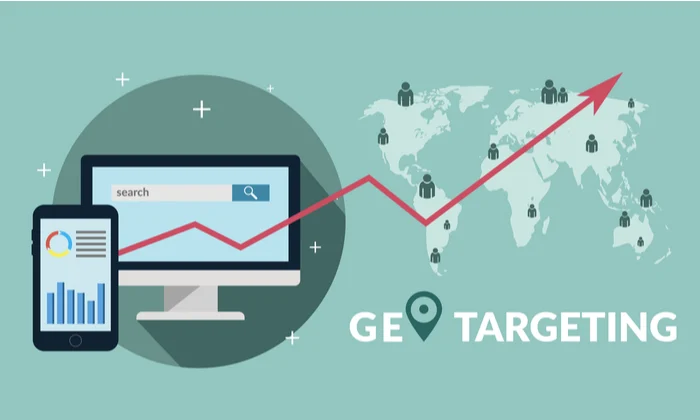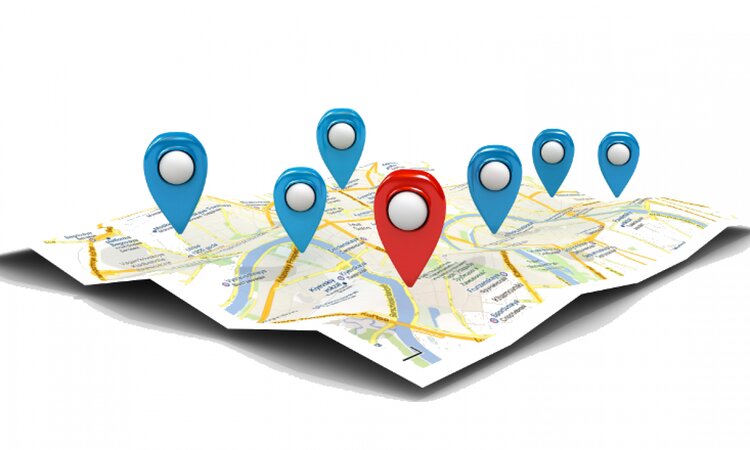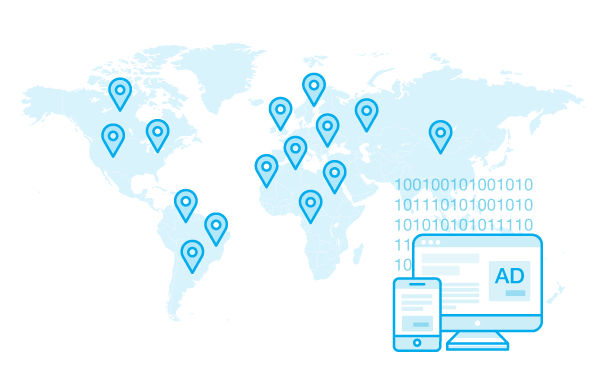
How AI is Revolutionizing Location-based Marketing: A Comprehensive Guide
July 31, 2023
The Power of AI-Generated Videos: Engaging Your Audience Like Never Before
August 1, 2023What is Geotargeting?
Geotargeting is a powerful marketing strategy that uses location data to deliver personalized content, offers, and advertisements to users based on their physical location. Businesses can leverage geotargeting to ensure that their marketing messages reach the right audience at the right time and place. For example, a global e-commerce platform can display region-specific promotions to customers in different countries, increasing the chances of conversion.
Evolution of Location-based Marketing
Location-based marketing has evolved significantly over the years. It began with basic geographical targeting, where businesses manually identified their customers’ locations and tailored their marketing efforts accordingly. With the advent of mobile devices and GPS technology, location-based marketing became more precise and accessible. However, traditional methods had limitations in accuracy and scalability.
In recent years, advancements in AI have propelled geotargeting to a new level. AI-powered algorithms can process vast amounts of data, including historical location data, user behavior patterns, and real-time information, to make accurate predictions about a user’s current location. This level of accuracy and real-time targeting has redefined location-based marketing, making it more effective than ever before.
Importance of Geotargeting in Digital Marketing
Geotargeting plays a crucial role in digital marketing for several reasons. First and foremost, it allows businesses to deliver highly relevant and personalized content to their audience. By understanding a user’s location, businesses can tailor their messages to align with local preferences, cultural nuances, and current events. This level of personalization fosters a deeper connection with customers, leading to increased engagement and loyalty.
Moreover, geotargeting enables businesses to optimize their advertising budget by focusing on specific geographic areas with the highest potential for success. Instead of targeting a broad audience, businesses can concentrate their resources on regions where their products or services are in high demand. As a result, the return on investment (ROI) for marketing campaigns improves significantly.

The Role of AI in Advancing Geotargeting
Understanding AI in Marketing
Artificial Intelligence (AI) has become a game-changer in the marketing world. It refers to the simulation of human intelligence in machines, allowing them to analyze data, learn from patterns, and make informed decisions. In marketing, AI is employed to gain insights from customer data, predict behavior, and deliver personalized experiences.
AI in geotargeting enables businesses to process and analyze large datasets quickly and accurately. Machine learning algorithms can identify patterns and trends within location data, helping marketers understand user preferences and behavior better. This insight allows businesses to create highly targeted and relevant marketing campaigns.
How AI Enhances Geotargeting Accuracy
One of the challenges in geotargeting is ensuring the accuracy of location data. Traditional methods, such as IP-based geotargeting, may not always provide precise results, especially in urban areas with dense IP address clusters. However, AI can significantly enhance the accuracy of geotargeting.
Machine learning algorithms can analyze historical location data, user preferences, and behavior patterns to make accurate predictions about a user’s current location. Additionally, AI can factor in real-time data, such as the user’s movement and activities, to refine geotargeting accuracy further. This combination of historical and real-time data ensures that businesses deliver relevant content at the right moment and location, maximizing the impact of their marketing efforts.
Real-time Data and Machine Learning in Geotargeting
AI-powered geotargeting excels in leveraging real-time data to deliver contextually relevant marketing messages. For example, a retail store can use AI algorithms to analyze foot traffic data and trigger personalized offers or promotions when potential customers are in close proximity to the store. This level of precision enables businesses to capitalize on immediate opportunities and drive foot traffic into physical locations.
Machine learning algorithms also continuously learn from user responses and behavior, enabling marketers to optimize their geotargeting strategies over time. As the AI system gathers more data, it becomes more adept at identifying patterns and predicting user preferences. This iterative learning process leads to increasingly accurate and effective geotargeting campaigns.

Geotargeting Strategies and Techniques
Geotargeting offers a myriad of strategies and techniques to reach the right audience effectively. By tailoring messages based on location, businesses can engage users with content that resonates with their specific needs and preferences. Here are some popular geotargeting approaches:
Demographic-based Geotargeting
Demographic-based geotargeting involves segmenting the audience based on demographic attributes such as age, gender, income, and education level. For instance, a luxury fashion brand can target high-income neighborhoods with exclusive promotions, while a family-friendly amusement park can focus on areas with a higher percentage of families with children.
Behavioral-based Geotargeting
Behavioral-based geotargeting focuses on user behavior and interests. By analyzing user activities such as website visits, app interactions, and search queries, businesses can understand their audience’s preferences better. For example, a fitness equipment retailer can target individuals who frequently search for fitness-related products within a specific location.
Contextual Geotargeting
Contextual geotargeting takes into account the context in which users access content. This includes factors such as weather conditions, local events, and current trends. For instance, a coffee shop can offer discounts on cold beverages during hot summer days, leveraging contextual information to attract nearby customers.
Geofencing and Proximity Marketing
Geofencing and proximity marketing are powerful techniques for engaging customers in specific locations. Geofencing involves setting up virtual boundaries (geofences) around physical locations. When a user enters or exits a geofenced area, businesses can send push notifications or trigger location-specific offers. For instance, a restaurant can send a welcome message and a discount coupon to users who enter the geofenced area.
Proximity marketing, on the other hand, focuses on delivering content to users based on their proximity to a physical location. Businesses can use beacons or Bluetooth technology to detect when users are within a certain range of their store or venue. This can include personalized welcome messages, product recommendations, or promotional offers.

Benefits and Challenges of Geotargeting 2.0
Geotargeting 2.0, powered by AI, offers a range of benefits for businesses looking to enhance their marketing efforts. However, it also comes with certain challenges that need to be addressed to ensure a successful implementation. Let’s explore the benefits and challenges of geotargeting 2.0:
Personalized Customer Experience
One of the most significant advantages of geotargeting 2.0 is the ability to deliver a personalized customer experience. By understanding a user’s location and preferences, businesses can create highly relevant and tailored content and promotions. For example, a travel agency can offer destination-specific travel packages and recommendations, enticing customers with personalized experiences.
Personalization fosters a deeper connection between brands and customers, leading to increased engagement, loyalty, and customer satisfaction. When users receive content that resonates with their specific needs and interests, they are more likely to engage with the brand and convert into paying customers.
Increased Conversion Rates
Geotargeting 2.0 can significantly improve conversion rates for marketing campaigns. By delivering contextually relevant content at the right moment and location, businesses increase the chances of capturing the attention of their target audience. When users receive offers or promotions that align with their immediate needs or preferences, they are more likely to take action, such as making a purchase or visiting a physical store.
Moreover, geotargeting allows businesses to focus their marketing efforts on areas with a higher potential for success. Instead of using a one-size-fits-all approach, businesses can concentrate their resources on regions where their products or services are in high demand. This targeted approach maximizes the return on investment (ROI) for marketing campaigns and optimizes marketing spend.
Enhanced Campaign Performance
Geotargeting 2.0 enables businesses to gain deeper insights into campaign performance and user behavior. AI-powered algorithms continuously analyze user responses, behavior patterns, and location data to refine geotargeting strategies over time. This iterative learning process leads to increasingly accurate and effective campaigns.
Additionally, real-time data and feedback allow businesses to adjust their marketing messages on the fly. For example, if a restaurant notices low foot traffic during lunchtime, it can send targeted promotions to nearby users, encouraging them to visit for a special lunch offer. The ability to make real-time adjustments based on data-driven insights improves campaign performance and ensures the best possible results.
Privacy and Ethical Concerns
Despite the numerous benefits of geotargeting, there are ethical considerations that businesses must address. Geotargeting involves collecting and using sensitive location data, which can raise privacy concerns among users. Businesses must be transparent about their data collection practices and provide clear information about how user data will be used.
To address privacy concerns, businesses can implement data anonymization and encryption techniques to protect user information. Additionally, obtaining explicit consent from users before collecting location data is essential to ensure compliance with privacy regulations.
Moreover, businesses should be mindful of the potential for location-based advertising to be perceived as intrusive or annoying by users. Bombarding users with constant notifications or irrelevant offers can lead to a negative user experience and damage brand reputation. It is crucial to strike a balance between personalization and respect for user privacy and preferences.

Geotargeting Success Stories
To illustrate the power of geotargeting 2.0, let’s explore three success stories from businesses that have leveraged location-based marketing to achieve outstanding results:
Case Study 1: A Coffee Shop’s Geofencing Triumph
A popular coffee shop chain implemented geofencing as part of its marketing strategy to attract new customers and increase foot traffic to its stores. The coffee shop set up geofences around busy commercial areas, university campuses, and office buildings. Whenever a user entered the geofenced areas, they received a push notification inviting them to try the coffee shop’s latest seasonal beverage and offering a 10% discount for their first visit.
The geofencing campaign generated a significant increase in foot traffic to the coffee shop’s stores. The targeted approach ensured that the promotions reached users who were nearby and likely to be interested in the offer. As a result, the coffee shop saw a substantial boost in sales and customer engagement. The success of this geofencing campaign motivated the coffee shop to expand its geotargeting efforts to other locations and events.
Case Study 2: Retail Store Boosts Sales with Location-based Coupons
A retail chain sought to drive more traffic to its physical stores and encourage repeat purchases from existing customers. The company implemented a geotargeting campaign that utilized proximity marketing. The retail chain placed beacons near the entrance and various departments within its stores. When a user with the store’s app came within range of the beacons, they received personalized offers and discounts for products in that specific department.
The proximity marketing campaign had a remarkable impact on the retail chain’s sales performance. Customers appreciated the personalized offers tailored to their shopping preferences, and many of them made impromptu purchases due to the limited-time discounts. The increased foot traffic also contributed to higher sales across various departments within the stores.
Case Study 3: Food Delivery App’s Hyper-local Advertising Win
A food delivery app aimed to improve user engagement and increase order frequency among its existing user base. The app used geotargeting to deliver hyper-local advertisements and promotions to users based on their precise location. For example, users near a particular restaurant would receive a notification offering a time-limited discount for orders placed within the next hour.
The hyper-local advertising strategy led to a significant increase in order frequency and customer retention. Users appreciated the timely and relevant promotions, which encouraged them to order from the app more frequently. The food delivery app saw a substantial rise in revenue and a strengthened customer base due to this geotargeting campaign.
![]()
Future Trends and Innovations in Geotargeting
As technology continues to evolve, the future of geotargeting holds exciting possibilities. Here are some trends and innovations that are likely to shape the landscape of geotargeting in the coming years:
Augmented Reality and Geotargeting Integration
Augmented Reality (AR) technology enhances the user experience by overlaying digital content on the real world. Integrating AR with geotargeting can create unique and immersive experiences for users. For example, businesses can use AR to guide users to specific locations or offer interactive promotions based on their physical surroundings.
Imagine a retail store using AR to display virtual fitting rooms and product displays at the exact location where users are shopping. This integration can provide customers with a dynamic and engaging shopping experience, leading to increased brand loyalty and sales.
Voice Search and Location-based Results
Voice search has become increasingly popular with the rise of virtual assistants and smart speakers. As more users rely on voice search for information and recommendations, geotargeting will play a pivotal role in delivering relevant and localized search results.
For instance, when a user asks a virtual assistant for nearby restaurants, geotargeting can identify their location and provide a list of restaurants within their vicinity. Voice-activated geotargeting can also be applied to other industries, such as healthcare, tourism, and retail, where users may seek local services and recommendations.
AI-driven Hyper-personalization
The integration of AI and geotargeting will continue to drive hyper-personalization to new heights. AI-powered algorithms can process vast amounts of data to create highly detailed user profiles, considering factors such as location, behavior, preferences, and purchase history.
Hyper-personalization allows businesses to anticipate user needs and deliver content that aligns perfectly with individual preferences. For example, an AI-driven recommendation engine can suggest nearby attractions, events, and activities based on a user’s location and interests.

Geotargeting Best Practices for Businesses
To maximize the benefits of geotargeting and ensure successful implementation, businesses should follow these best practices:
Data Privacy and Transparency
Obtaining user consent and being transparent about data collection practices are paramount in geotargeting. Businesses must clearly communicate how user data will be used and reassure users that their privacy is protected.
A/B Testing and Optimization
A/B testing is a valuable technique for refining geotargeting strategies. Businesses should conduct experiments with different content, offers, and geofencing parameters to identify the most effective approaches. Continuous optimization based on data-driven insights ensures better campaign performance over time.
Integrating Geotargeting with Omni-channel Marketing
To create a seamless user experience, businesses should integrate geotargeting with their overall marketing strategy. This includes aligning geotargeted messages with other marketing channels, such as email marketing, social media, and website content.
Monitoring and Analyzing Geotargeting Metrics
Measuring the success of geotargeting campaigns is essential for ongoing improvement. Businesses should track key performance indicators (KPIs) such as foot traffic, click-through rates, and conversion rates to evaluate the effectiveness of their geotargeting efforts.


